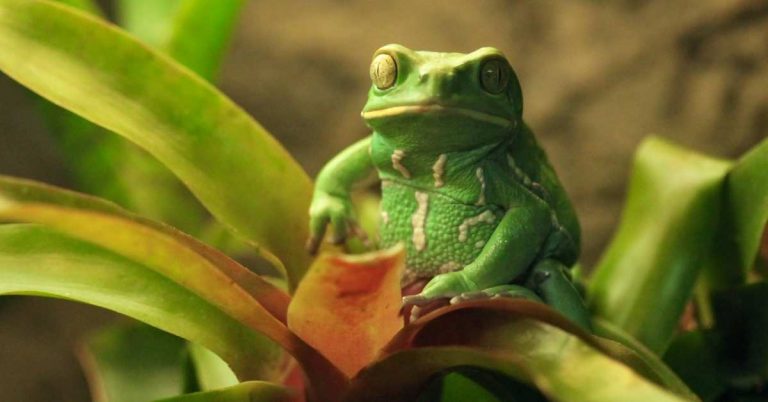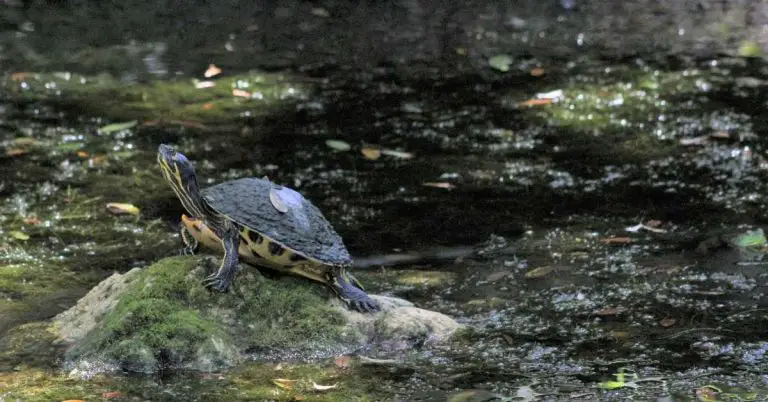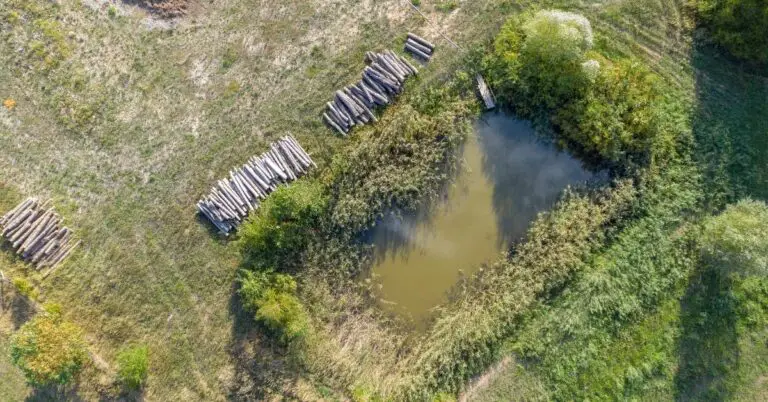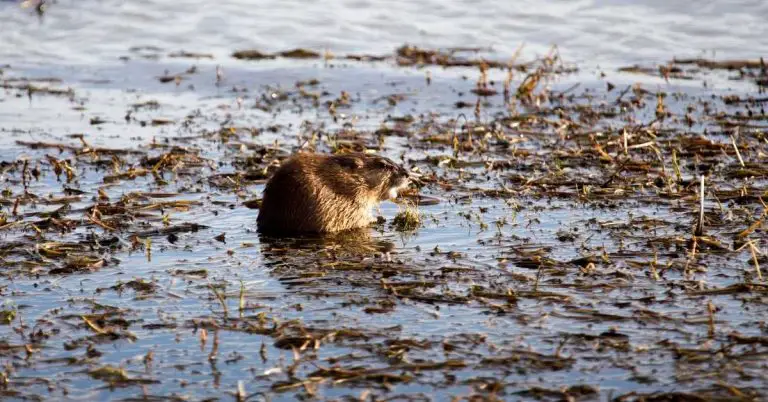How To Tell If A Pond Has Turned Over
All pond owners worry about the health of their pond. One of the biggest fears of a pond owner is the prospect of “turnover”, but it can sometimes be difficult to know what exactly pond turnover is or how to identify it.
In general, you can tell if a pond has turned over when the water suddenly becomes murky, there is a sulfur like smell and the fish are dead or gasping for air at the surface. Pond turnover occurs when toxic, decayed matter at the bottom of a pond rises to the top due to a sudden change in temperature. Pond turnover can kill fish and destroy the natural ecosystem of the pond.
Let’s discuss how pond turnover works, how to fix it if you find it occurring and what you can do to prevent it from happening in the first place.
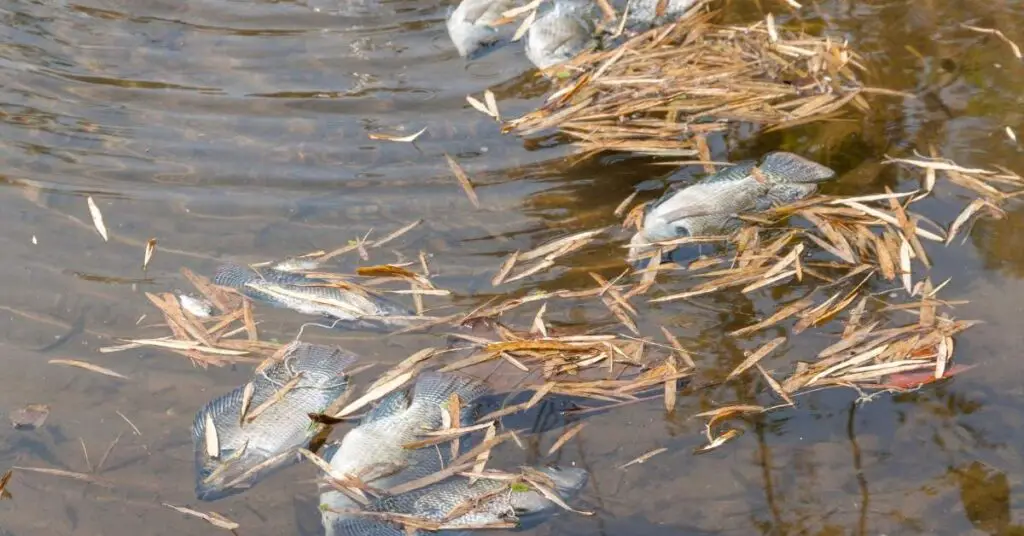
What Is Pond Turnover?
Pond turnover is a natural occurrence that happens quite frequently in small bodies of fresh water like backyard ponds and lakes. However, it can be quite a shock to many pond owners because it usually involves the pond’s water suddenly becoming very murky and all the fish within it dying.
Pond turnover happens when the water in the pond literally “turns over” and the cold water at the bottom rises to the top. This usually happens due to sudden temperature changes such as cold rains or wind which causes the water at the top to sink to the bottom. When turnover occurs, decayed toxic matter at the bottom of the pond rises and mixes with the clean water above. It also releases large amounts of nutrients into the water fueling an algae bloom. This algae overgrowth then saps the pond of all its oxygen and kills any animals or fish that rely on it.
Pond turnover can happen for many reasons, but it’s always the result of water at the bottom mixing with water at the top. If you imagine a glass of water with some dirt settled at the bottom, if you stir the glass the dirt is going to spread and mix throughout the rest of the glass. This is what’s happening in your pond.
Normally, cold water sits at the bottom of the pond and warmer water rises to the top. The cold water actually helps to keep decayed organic matter, like leaves, dead organisms, etc, from floating back to the surface. The reason this is important is because decayed organic matter is full of nutrients and nutrients are what various lifeforms in the water feed on – including algae.
When algae is suddenly given a giant boost in nutrients, such as during pond turnover, it can cause a bloom to occur. Normally, algae produces oxygen as a result of photosynthesis, but at nighttime algae consumes oxygen. This process is amplified by murky water blocking sunlight and preventing oxygen production and before long the algae has consumed all the usable oxygen in the pond. Any aquatic life that relies on oxygen, like fish, will quickly die.
How Long Does It Take A Pond To Turn Over?
A pond can turnover very quickly, especially smaller ponds. Pond turnover can happen in as little as one or two nights of cold weather or rainfall in a stratified body of water.
During the summer months, enclosed bodies of water tend to “stratify” into distinctly separate layers. Usually this includes a layer of debris, muck and gasses at the bottom, a healthy livable layer in the middle and algae and weeds on the surface. This gives your fish very little livable room to feed and breathe and makes your pond susceptible to turnover when the temperatures turn colder.
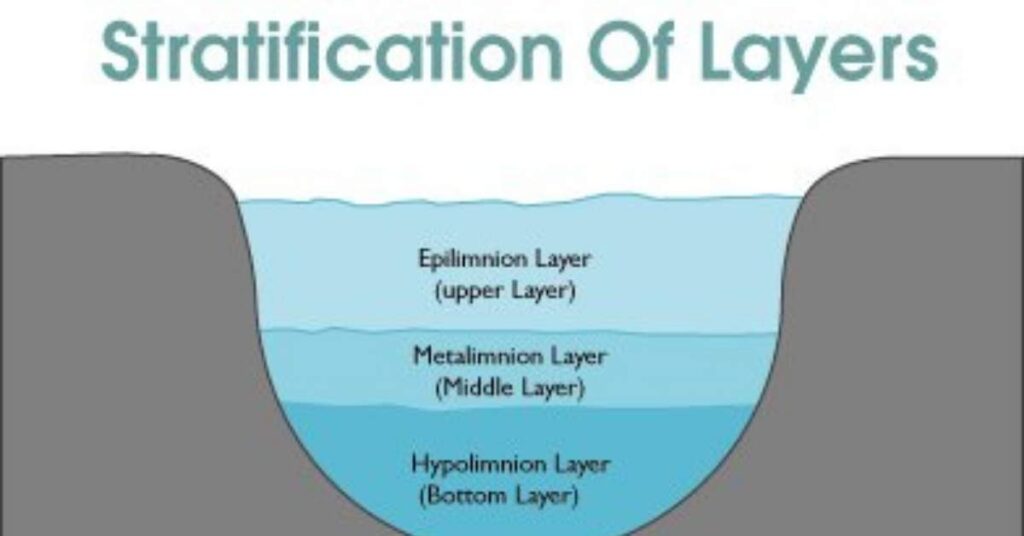
Under these stratified conditions, all it takes is a night or two of cold temperature or rainfall and the warmer top layers of the pond will sink into the murky, toxic levels below. This mixes the stratified layers and is why a foul smell and cloudy water are some of the tell-tale signs of pond turnover.
As the layers mix, the oxygen deprived lower levels mix with the oxygen rich upper levels diluting the overall dissolved oxygen supply and creating a toxic mess for any fish living in it.
Furthermore, this nutrient rich matter from the bottom feeds algae and can cause an overgrowth that sucks even more of the oxygen from the pond.
How Do You Fix A Pond That Turns Over?
Since pond turnover is a natural process that occurs due to a buildup of unhealthy layers of water over time, it’s very difficult to reverse the process once it’s begun. However, there are some things you can do to prevent a complete fish kill as well as ways you can prevent it from happening in the future.
One of the key components to what makes pond turnover so deadly to any fish within it is a lack of oxygen. The mixing of oxygenated water with oxygen deprived water makes breathing difficult which causes them to gasp at the surface where oxygen is more plentiful.
One way to fix a pond that has turned over is through constant aeration. Aeration mechanically incorporates air into the water which consequently adds oxygen as well. Aeration can come in many forms but most commonly it’s accomplished by using a pump or a fountain.
A fountain pumps water into the air where it collects oxygen that then gets deposited back into the pond. This is great as an ongoing source of oxygen for your pond but probably not enough to fix or prevent the problems caused by pond turnover.
A better way to fix pond turnover is by using some kind of subsurface aeration system. Subsurface aeration works by pumping large amounts of air from the surface through a diffuser that breaks it up into small oxygen-rich bubbles. This air is then pumped to the bottom of the pond adding huge amounts of oxygen that prevents toxic stagnation and helps breakdown any decayed organic matter.
Subsurface aeration also helps prevent pond turnover by keeping the water mixed and preventing stratification. This helps your pond’s ecosystem by greatly enlarging the healthy livable layers of water where fish and healthy bacteria can live. It also eliminates the possibility of pond turnover because there are no unhealthy layers of water to turnover and dilute healthy ones in the first place.
How Do I Know If My Pond Is Stagnant?
Stagnant water is the perfect environment for pond turnover and a generally unhealthy ecosystem for your pond. Keeping an eye out for the tell tale signs of stagnation are key to preventing fish kills and unwanted algae growth.
Look for the following signs of stagnation in your pond:
- Murky, cloudly water
- Excessive algae growth
- Excessive muck at the pond’s bottom
- Foul smelling air near the pond
- Fish gasping for air near the pond’s surface
- Dead or lethargic, unhealthy looking fish
To avoid stagnation in your pond, considering the following:
- Use a pump to constantly aerate and move your pond’s water
- Don’t overfeed your fish – any excess will just decay
- Skim the surface to remove leaves and debris
- Include plenty of plants to absorb excess nutrients
- Test PH levels regularly
- Watch for discoloration of pond plants
- Watch for unusual colored streaks on your fish
- Consult a professional
Related Questions:
Why Are All The Fish In My Pond Dying?
Pond fish can die for various reasons, including natural causes and predation by other animals. But if many fish in your pond are dying all at once, it’s probably the result of a mass fish kill. Very often this is the result of pond turnover which poisons the healthy water in the pond with toxic matter and reduces oxygen levels drastically.
Does A Waterfall Oxygenate A Pond?
A waterfall is an excellent and beautiful way to oxygenate your backyard pond. Waterfalls oxygenate ponds by collecting oxygen from the air and depositing it back into the water via the forces of gravity. Properly oxygenated water is essential to maintaining a healthy backyard pond with happy, thriving aquatic life.
What Causes A Pond To Flip?
Ponds flip, or turnover, when cold toxic water at the bottom of the pond is forced upwards into the healthy oxygenated areas above. This happens when the warmer water at the top suddenly becomes cold, due to rain or weather, causing it to sink and stir up the murky waters below. Pond flipping or turnover can be extremely detrimental to all forms of life in your pond.

